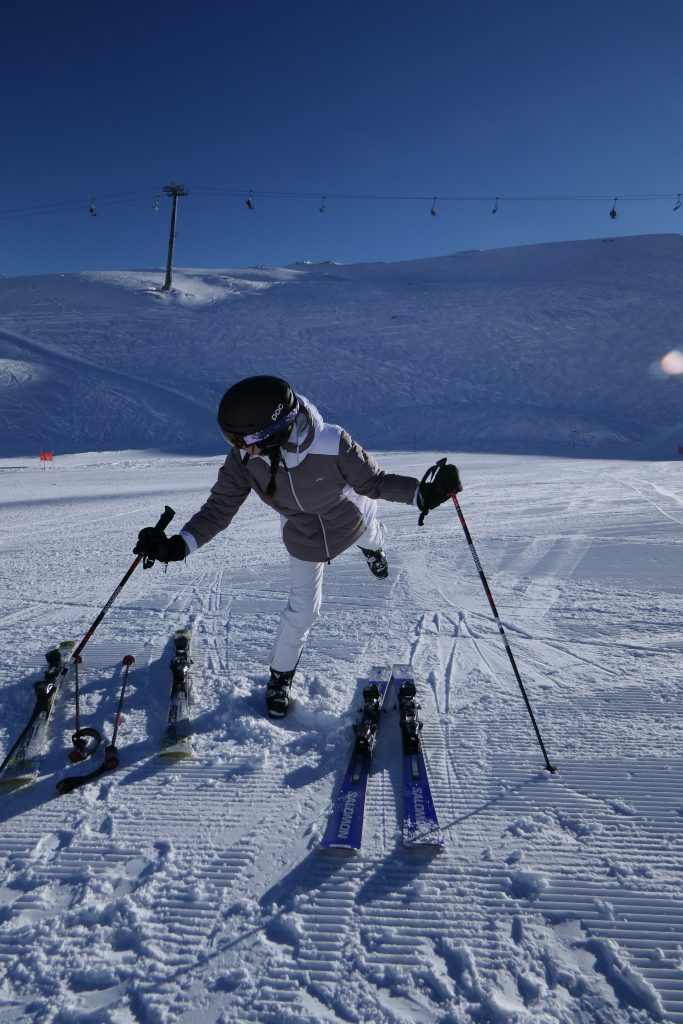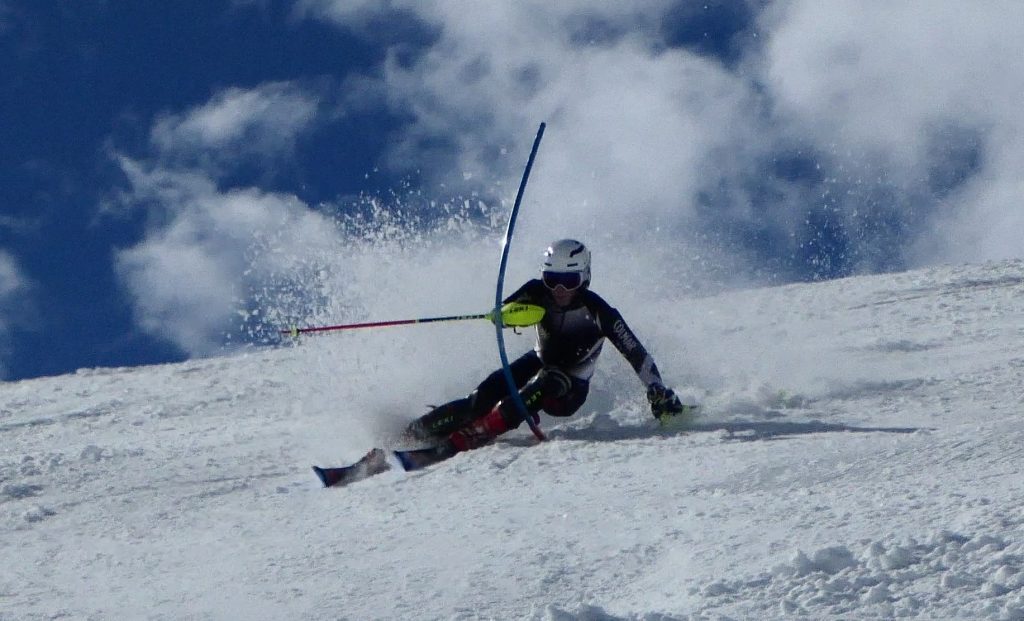William leading the group – skiing with his feet together (according to William!) – and everyone following his tracks – sort of. (Tom – sorry for the missing bumps video – wrong button push!)
Georgina – good effort and clear dynamics and definite pivot and control of rotation – just try to keep the feet together for the bumps!
Body Management (Hip Angulation)
Take a look at the two Olympic champion skiers in the photograph below.
Killy’s image from the 1960s has his chest facing downhill whereas Noel’s image from 2022 has his chest facing forward. What Killy is doing destroys your lower back and is probably why he never went on skis again after he stopped racing.

Protecting the Spine
- Hold the front of the pelvis up – aiming for “neutral pelvis”
- During the turn pull the outer hip backwards so that the ski doesn’t pull it in front of your ribs
- Look for a stretch between the ribs and hip joint
- Look for a reflex contraction of the lower abdominals – the postural reflex
- Keep the shoulders/chest following the skis (to some degree)
- Always “counter turn” the pelvis more than the chest/shoulders (It’s only the pelvis that should “face downhill”)
- Pulling the hip backwards also prevents both hip rotation and full upper body rotation
Source of Hip Angulation
The upper body needs to tilt forward over one hip joint – then rotate around it. This is in addition to pulling back the outside hip etc.
The body shape produced alters the location of the centre of mass enabling pressure on the ski fronts and also greater agility both into and out of turns – and pole planting if the skis are swinging laterally.
The hip angulation also provides flexion of the hip joint that gives absorption of shocks. Increased angulation also increases the edge angle of the skis to the snow and may alter the turn radius and grip.
Angulation when upright and pivoting has another function – when ANTICIPATING the next turn it is used to get the Centre of Mass out of the existing turn (by tilting the torso forward at the hip ) and letting the Centre of Mass move over the skis to plant the ski pole downhill for a strong, clear and definite support.

When the entire body inclines into the turn with hip angulation present this below is what it looks like.

Pivoting (Steep and Deep) and Compression Turns
Deep snow “fall line” skiing requires “flat skis” – which requires pivoting, pole use and strong anticipation… effectively short fall line turns.
In the deep snow photo below look how the centre of mass is crossing over the skis into the next turn but the skis remain on their uphill edges… (i.e – a carved turn would instead have the skis strongly edged) The flat skis are achieved by strong “anticipation” the body moving out over the skis but the knees still held uphill.


Compression turns on the flat simulate real compression with bumps – where the legs bend to absorb the bump and serious anticipation/pole use is required.
Here’s a video clip showing proper compression turns at an advanced level. Warning! – The drills used to “teach” in the clip are mainly inappropriate and fail to show the pivoting nature of bump skiing.
Leg Retraction Timing
Leg retraction being used in carving – similar to compression turns (pivoting) – the extended outside leg bends to bring the skier out of the turn – and immediately as the body passes over the skis the uphill leg extends – this is the fastest way to get the body from one turn to the next.

